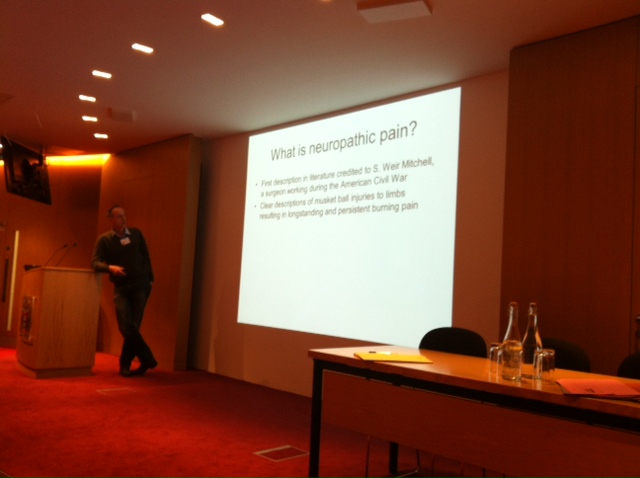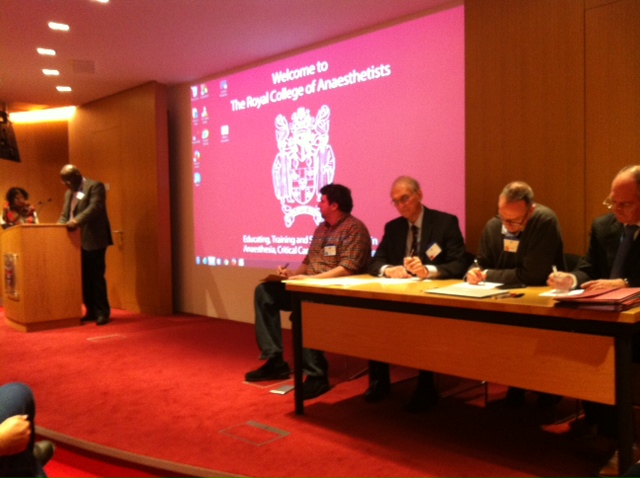In December, I attended a seminar that bought together medical experts, patients and patient representatives to discuss the difficulties and challenges faced by chronic pain patients. This week’s blog highlights the important discussions and messages that were taken from the day.
It is estimated that 14 million people live with chronic pain in England. Living with chronic pain can have a major impact on a person’s quality of life, particularly if inadequate services are failing to support these patients properly. AKU patients commonly report pain and this can have a significant impact on their daily life. In December, I attended a seminar run by the British Pain Society to bring together medical professionals and patients to work together to raise awareness of pain and improve pain services.
We started the day with an introduction from Anthony Chuter and Anusha Nirmalananthan from the British Pain Society, who discussed the lack of awareness and understanding of chronic pain. With chronic conditions, it is the patient who becomes the expert in their condition. It is therefore so important to understand the patients need and involve them in service improvements.

The first talk of the day was from Sir Michael Bond. Michael used an iceberg analogy to explain the concept of pain, as there is a vast amount underneath the surface of patients suffering pain. The idea of this hidden epidemic is important as chronic pain patients commonly report that the hidden nature of it makes it difficult for others to understand.
Michael introduced the idea of pain and fear. He talked about kinesiophobia, referring to the fear/avoidance behaviour commonly reported in pain clinics. Many patients suffering from low back pain and arthritis report fear of moving, as they are concerned this will exacerbate their pain. This resulted in an interesting discussion whereby it was suggested that these fear and pain associations could be a result of inadequate pain services.
Michael went on to talk about the pain toolkit. The pain toolkit was developed for people living with persistent pain and long term health conditions to support them to better manage their pain. Tips include acceptance, pacing and keeping a diary to track progress.
We also heard from Dr Austin Leach, who gave a talk on neuropathic pain. Neuropathic pain arises from a malfunction in the nervous system which results in damaged nerve fibers sending incorrect signals that are perceived as pain.

The discussion that followed allowed us to get a patient perspective on managing pain. The hidden notion of pain means patients often feel that their voice isn’t heard and at times not believed. What they really want from medical experts is a greater level of understanding and compassion.
After lunch, we were split into small groups, mixed of medical experts and patients, where we discussed ways to raise awareness and improve pain services. Many great ideas were put forward, including sharing the reality of living with pain on social media and educating medical students to improve the quality of future care. The top idea voted for by the panel was to have a national pain awareness day!

We ended the day by watching a video highlighting the daily challenges faced by patients who experience chronic pain. The video emphasised the key message:
‘it’s invisible, but it’s real’
The whole day was fantastic in bringing medical professionals and patients together to discuss the many problems surrounding chronic pain services. Working together, we can raise awareness and campaign for improved services for our patients and for the many patients that suffer from chronic pain.
To find out more information about pain and pain services, contact the British Pain Society.
We will also be running sessions on pain and managing pain at our International Patient Workshop in April.
